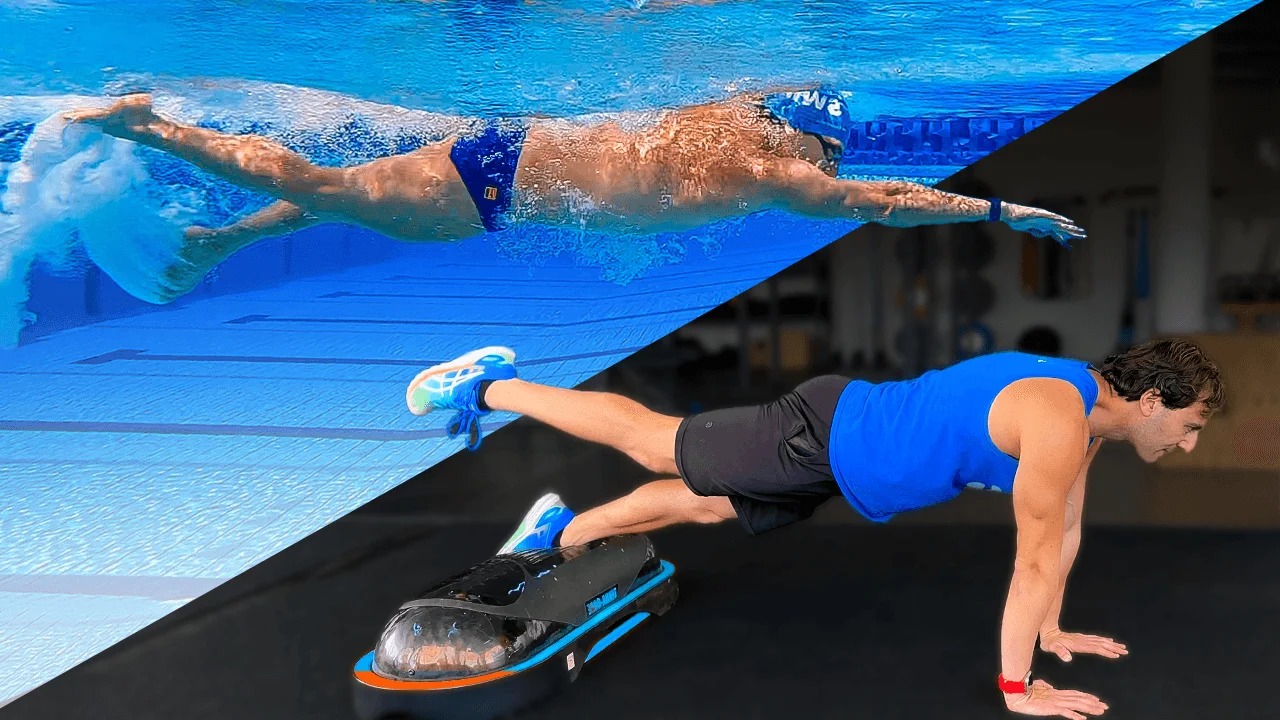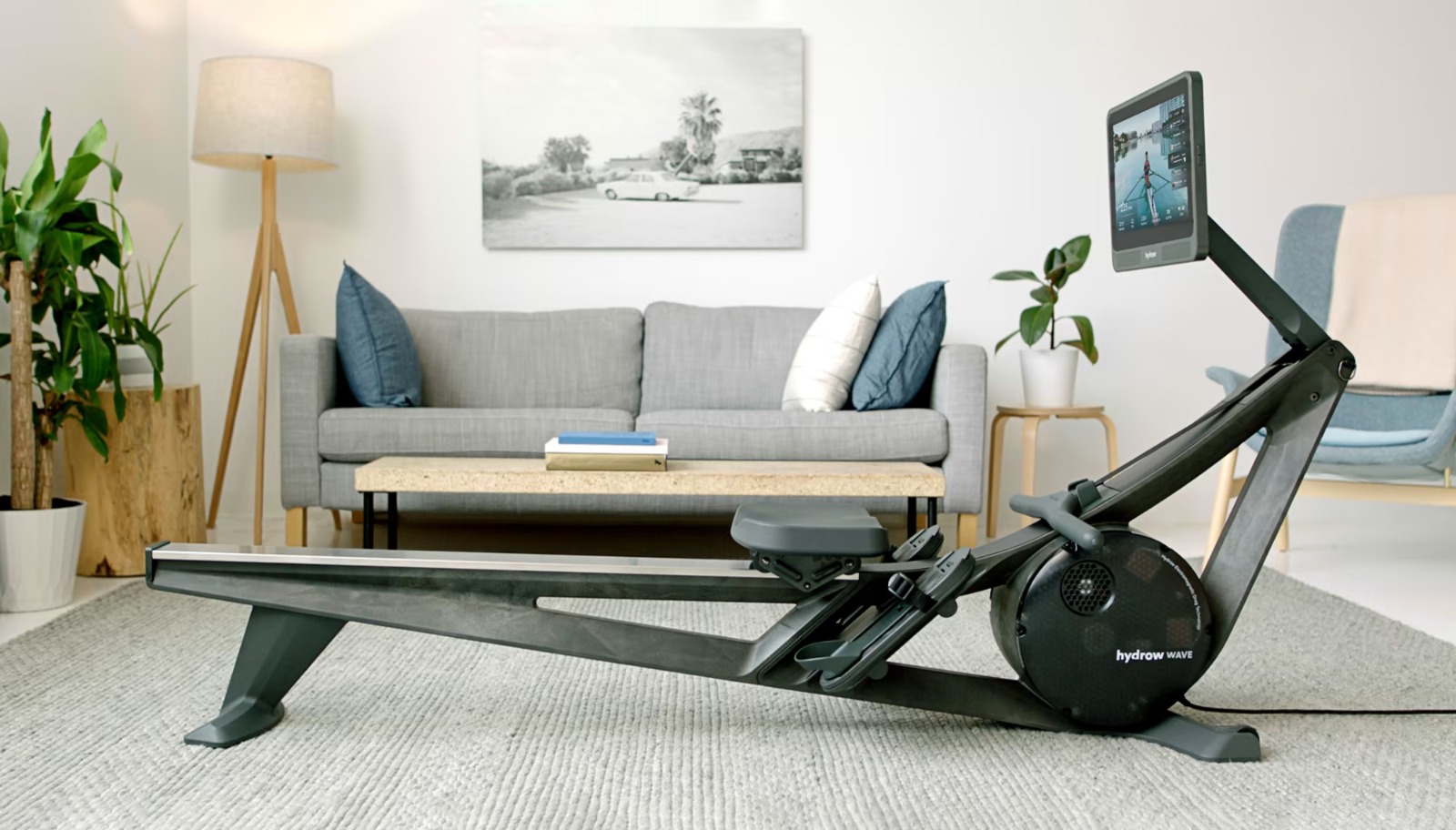
Underwater Workouts – Training in Pools for Strength & Endurance.
Underwater workouts offer a unique blend of resistance, buoyancy, and low-impact exercise, making them ideal for building strength, endurance, and flexibility while protecting joints. From aqua aerobics and deep-water running to resistance training and underwater HIIT, pool-based workouts provide an effective, safe, and refreshing way to improve overall fitness, aid recovery, and enhance both physical and mental well-being.
💪 Fitness Guru
50 min read · 7, Oct 2025

Introduction
Imagine working every muscle in your body without the painful strain that often accompanies land workouts. That’s the magic of underwater training. Once reserved for elite athletes and rehabilitation centers, aquatic workouts are now making waves in mainstream fitness. They combine the resistance of water with gravity-reduced movement, creating an environment that challenges muscles while minimizing injury risk. Whether you’re recovering from an injury, training for endurance sports, or simply looking to enhance your fitness routine, pool-based workouts can offer a balanced, refreshing, and powerful alternative to gym training.
The Science Behind Underwater Workouts
Water provides approximately 12 to 15 times more resistance than air, depending on depth and movement speed. This natural resistance works your muscles in all directions, not just one plane of motion like most land exercises. The hydrostatic pressure of water supports and stabilizes joints while promoting circulation and reducing swelling, which makes it ideal for both high-performance training and recovery.
When exercising underwater, your heart works harder to pump blood because of the external pressure. At the same time, your body temperature remains regulated, reducing fatigue. Furthermore, buoyancy reduces your body weight by up to 90%, depending on how deeply you’re submerged, significantly lowering the impact on your bones and joints.
Together, these factors create a workout environment that is intensely challenging yet incredibly safe, enhancing cardiovascular endurance, muscular strength, and flexibility without overloading the body.
Benefits of Underwater Training
1. Enhanced Muscle Strength
Each movement underwater requires pushing against the constant resistance of water molecules. Unlike land-based resistance, which works muscles in specific directions, water provides multi-directional resistance, engaging stabilizer muscles and improving coordination.
2. Improved Endurance
Because of the constant resistance and cardiovascular challenge, aquatic workouts significantly improve aerobic and anaerobic endurance. Your lungs and heart adapt to a more oxygen-demanding environment, enhancing stamina over time.
3. Low-Impact Exercise
The buoyancy of water cushions joints and ligaments, making underwater workouts perfect for injury rehabilitation or for those with arthritis, back pain, or joint issues.
4. Faster Recovery
Water pressure helps reduce swelling and inflammation while improving blood circulation. Athletes often use pool workouts after intense land training to recover without losing conditioning.
5. Increased Caloric Burn
Though movements feel easier underwater, your body actually burns more calories due to resistance. A 60-minute session can burn between 400–700 calories, depending on intensity.
6. Mental Relaxation
Water has a calming effect on the nervous system. Exercising in water releases endorphins and lowers stress hormones, providing both physical and mental rejuvenation.
Types of Underwater Workouts
Underwater workouts can range from simple aerobic movements to advanced resistance training routines. Here are several popular and effective methods:
1. Aqua Aerobics
This form of water exercise uses rhythmic, low-impact movements performed to music. Common moves include water jogging, jumping jacks, and leg kicks. It’s ideal for improving cardiovascular health and muscle tone.
2. Deep Water Running
Performed in the deeper section of the pool using a flotation belt, deep-water running mimics the motion of running on land but without impact. It’s a favorite among runners recovering from knee or ankle injuries.
3. Aqua Strength Training
Involves using water dumbbells, resistance bands, paddles, or foam noodles. Exercises such as underwater bicep curls, triceps extensions, or leg lifts help tone and strengthen the body efficiently.
4. Aqua Cycling
Special stationary bikes are placed underwater for aqua spinning sessions. The resistance from the water increases leg strength, improves cardiovascular endurance, and provides an excellent calorie burn.
5. Underwater HIIT (High-Intensity Interval Training)
Alternating between short bursts of high effort (e.g., fast kicks or sprints) and recovery phases, underwater HIIT challenges your cardiovascular system while keeping joint impact minimal.
6. Aqua Yoga and Pilates
Combines traditional yoga and pilates poses with the fluidity of water. This approach enhances balance, flexibility, and mindfulness.
Sample Underwater Workout Routine
Here’s a 45-minute full-body underwater workout suitable for beginners to intermediates:
Warm-up (5 minutes)
- Water jogging in chest-deep water – 2 minutes
- Arm circles and side steps – 3 minutes
Cardio Segment (15 minutes)
- High knees in place – 2 minutes
- Jumping jacks – 2 minutes
- Cross-country ski motions – 2 minutes
- Fast water sprints (shallow to deep end) – 3 rounds, 3 minutes each
Strength Segment (20 minutes)
- Upper Body:
- Water dumbbell chest press – 3 sets of 15
- Bicep curls – 3 sets of 12
- Triceps kickbacks – 3 sets of 12
- Lower Body:
- Squats – 3 sets of 15
- Leg lifts (front and side) – 3 sets of 10 each leg
- Flutter kicks holding pool edge – 3 sets of 30 seconds
Cool Down (5 minutes)
- Gentle walking in water – 2 minutes
- Shoulder and leg stretches – 3 minutes
Equipment Used in Underwater Training
- Aqua Dumbbells: Lightweight on land but highly resistant underwater.
- Resistance Bands: Used for added resistance in strength training.
- Aqua Gloves: Enhance resistance during arm movements.
- Kickboards and Pool Noodles: For balance, floating support, or core work.
- Aqua Bikes and Treadmills: For specialized cardio training.
- Weighted Belts or Vests: Increase intensity while maintaining buoyancy control.
Who Can Benefit from Underwater Training
- Athletes: Improves power, balance, and recovery.
- Seniors: Provides safe, joint-friendly exercise for strength and mobility.
- Rehabilitation Patients: Helps restore movement and confidence post-injury.
- Pregnant Women: Eases joint stress and enhances circulation.
- General Fitness Enthusiasts: Offers a unique and refreshing change to gym routines.
Precautions and Safety Tips
- Always warm up before starting.
- Stay hydrated even though you’re in water.
- Avoid overexertion – resistance can be deceptive.
- Ensure lifeguard supervision or training partner presence.
- Use proper footwear for traction.
- Consult a doctor before beginning if you have heart or lung conditions.
Scientific Studies Supporting Aquatic Training
Research published in the Journal of Sports Medicine and Physical Fitness found that aquatic resistance training improved muscular strength, endurance, and flexibility significantly more than traditional gym training for older adults.
Another study in The American Journal of Sports Medicine showed that athletes who used underwater workouts for recovery had 30% faster rehabilitation times compared to traditional land exercises.
These studies confirm that aquatic exercise is not merely a “gentle option” but a scientifically proven, effective training modality.
Environmental and Emotional Benefits
Water workouts can be deeply therapeutic. The sensation of immersion has been linked to reduced cortisol levels and increased relaxation responses. Pools also offer a sensory-friendly environment — the rhythmic movement and sound of water can promote mindfulness and emotional balance, making aquatic exercise beneficial not only for the body but for mental well-being too.
Underwater workouts, also known as aquatic or pool-based training, have emerged as one of the most versatile, effective, and low-impact methods for improving overall fitness, building muscular strength, enhancing cardiovascular endurance, and promoting joint health, offering a unique blend of resistance, buoyancy, and hydrostatic pressure that creates a dynamic environment unlike any land-based exercise, and the science behind these workouts is both fascinating and highly supportive of their effectiveness, as water provides approximately twelve to fifteen times the resistance of air, depending on depth, speed, and surface area of movement, meaning that every kick, push, pull, or stretch must overcome this consistent, omnidirectional resistance, which in turn engages not only the primary muscles used in the motion but also stabilizer and core muscles that are often underutilized during conventional gym routines, and this is further enhanced by the buoyancy of water, which can reduce body weight by up to ninety percent when fully submerged, significantly decreasing stress on weight-bearing joints, ligaments, and tendons, making underwater exercise an ideal option for individuals recovering from injuries, seniors seeking safe mobility training, pregnant women, or anyone with conditions like arthritis, osteoporosis, or chronic joint pain, while still offering an intense and effective workout that challenges the cardiovascular system, increases muscular endurance, and promotes flexibility, and the hydrostatic pressure exerted by water evenly surrounds the body, helping improve circulation, reduce swelling, and assist in lymphatic drainage, which not only aids in physical recovery but also contributes to enhanced metabolic function and reduced muscle soreness post-exercise, and when considering the types of underwater workouts available, the options are diverse and cater to different fitness goals, including aqua aerobics, which combines rhythmic, dance-like movements with cardiovascular conditioning in shallow water, deep water running, which utilizes flotation belts to simulate running without impact, aqua strength training using water dumbbells, paddles, and resistance bands to perform presses, curls, squats, and leg lifts, aqua cycling on stationary bikes designed for water use, underwater high-intensity interval training (HIIT) to alternate between bursts of intense activity and active recovery periods, and aqua yoga or pilates that enhance flexibility, balance, and mind-body coordination, and each of these forms of aquatic exercise offers unique benefits, such as improved muscle tone and definition, increased joint range of motion, cardiovascular conditioning without overtaxing the heart or joints, caloric expenditure ranging from four hundred to seven hundred calories per hour depending on intensity, and the calming, stress-reducing properties of immersion in water, which promotes mental wellness through the release of endorphins and reduction in cortisol levels, and beyond the physical benefits, underwater workouts are accessible to a wide range of populations, from elite athletes seeking performance gains and injury prevention, to elderly individuals aiming to maintain strength and mobility, to rehabilitation patients rebuilding functional movement, to general fitness enthusiasts looking for variety and reduced joint strain, and the equipment used can vary from simple flotation devices such as pool noodles and kickboards to specialized tools like water dumbbells, resistance gloves, weighted belts, and underwater treadmills or bikes, all designed to increase resistance and provide a controlled challenge that can be scaled according to fitness level, and a typical underwater workout can include a combination of warm-up activities like water jogging and arm circles, cardio segments with high knees, jumping jacks, or flutter kicks, strength-focused routines targeting upper body, lower body, and core, followed by cool-down and stretching to ensure flexibility and recovery, and scientifically, research supports the efficacy of aquatic training, showing significant improvements in strength, endurance, and flexibility in both younger and older adults, faster rehabilitation for injured athletes, enhanced cardiovascular conditioning due to increased heart workload under water, and improved proprioception and balance from resistance and stabilization demands, and safety precautions are straightforward but essential, such as warming up properly, staying hydrated, avoiding overexertion, ensuring supervision or a partner is present, using proper footwear for traction, and consulting a medical professional if there are underlying cardiovascular, respiratory, or joint issues, and overall, underwater workouts combine the best aspects of resistance training, cardiovascular exercise, rehabilitation therapy, and mind-body conditioning into a single, highly adaptable, and enjoyable form of exercise, making it one of the most efficient and safe training modalities available today, and whether the goal is to build muscular strength, improve endurance, recover from injury, maintain joint health, or simply enjoy a refreshing and low-impact exercise environment, aquatic workouts offer a comprehensive, scientifically supported, and customizable approach to physical fitness that can be tailored to every individual’s needs, goals, and abilities, providing a holistic, full-body training experience that simultaneously promotes physical conditioning, mental wellness, injury prevention, and overall quality of life, and as more people seek alternative methods of exercise that reduce injury risk while maintaining effectiveness, underwater training stands out as an innovative and highly beneficial option that combines the resistance of water, the support of buoyancy, the therapeutic effects of hydrostatic pressure, and the versatility of multiple workout styles, proving that whether for high-performance athletes, fitness enthusiasts, or those with special needs, exercising in water is not just a gentle alternative but a powerful, efficient, and rewarding form of strength and endurance training that continues to gain popularity worldwide, transforming the way we approach movement, recovery, and overall health.
Underwater workouts, also known as aquatic or pool-based training, are an increasingly popular form of exercise that combines the natural resistance, buoyancy, and hydrostatic pressure of water to provide a highly effective, low-impact way to build strength, endurance, flexibility, and overall fitness, offering a unique approach that differs significantly from traditional land-based training because water provides approximately twelve to fifteen times more resistance than air, which means every movement, whether it is a kick, push, pull, or rotation, engages multiple muscle groups simultaneously, including stabilizer muscles that are often neglected in conventional workouts, while the buoyancy of water reduces the effective body weight by up to ninety percent when fully submerged, alleviating stress on joints, ligaments, and tendons, which makes it ideal for individuals recovering from injuries, those with arthritis, seniors seeking safe mobility exercises, pregnant women, or anyone who wishes to exercise with minimal impact, yet despite the reduced stress, the resistance provided by water ensures that muscles, cardiovascular systems, and endurance are still challenged, and the hydrostatic pressure of water further promotes blood circulation, reduces swelling, and assists in lymphatic drainage, contributing to faster recovery, reduced muscle soreness, and improved overall metabolic function, while also regulating body temperature to prevent overheating and fatigue during intense workouts, and the variety of underwater exercises is extensive, including aqua aerobics, which involves rhythmic, dance-like movements that enhance cardiovascular conditioning; deep water running using flotation belts to simulate land running without impact; aqua strength training with tools such as water dumbbells, resistance gloves, paddles, or noodles for bicep curls, tricep extensions, chest presses, squats, and leg lifts; underwater high-intensity interval training (HIIT) to alternate between bursts of maximum effort and active recovery; aqua cycling on specialized stationary bikes designed for water; and aqua yoga or pilates to improve balance, flexibility, and mind-body awareness, with each form of aquatic exercise offering unique benefits such as improved muscle tone, endurance, and core stability, higher caloric expenditure ranging from four hundred to seven hundred calories per hour depending on intensity, reduced risk of injury, and enhanced mental well-being due to the calming effects of water immersion, which lowers cortisol levels and triggers endorphin release, creating a sense of relaxation and reducing stress, and in practical terms, a typical underwater workout can be structured to include warm-up activities such as water jogging, arm circles, or side steps to prepare muscles and joints, followed by a cardio segment incorporating movements like high knees, jumping jacks, cross-country ski motions, or fast water sprints, then a strength segment targeting both upper and lower body using water dumbbells, kickboards, or resistance bands, including exercises such as bicep curls, triceps extensions, chest presses, squats, lunges, leg lifts, and flutter kicks, before finishing with a cool-down period featuring gentle walking in the pool and stretches to enhance flexibility, reduce muscle tension, and promote recovery, and the versatility of equipment used in underwater training—from basic pool noodles and kickboards to specialized aqua dumbbells, gloves, weighted belts, and underwater bikes—allows participants to scale workouts to their fitness level, progressively increase resistance, and target specific muscle groups, while also maintaining safety and joint protection, and scientific research consistently supports the benefits of aquatic training, demonstrating significant improvements in muscular strength, cardiovascular endurance, flexibility, and overall functional movement, as well as faster rehabilitation for injured athletes and reduced soreness for those transitioning from land-based exercise, and studies also indicate that the constant resistance and need for stabilization enhance core strength, balance, and proprioception, which translates to improved performance in other sports or daily activities, and underwater workouts are suitable for a wide range of populations, including elite athletes seeking performance gains, general fitness enthusiasts desiring variety and effective conditioning, seniors aiming to maintain mobility and strength, rehabilitation patients regaining functional movement post-injury, and individuals with chronic conditions such as arthritis or back pain, and the safety benefits are notable because the water supports body weight, reduces the risk of falls or strain, and allows for high-intensity effort without the impact-related injuries common on land, though it is still important to take precautions such as warming up, staying hydrated, avoiding overexertion, using proper footwear for traction, ensuring supervision or a partner when necessary, and consulting a medical professional before beginning an aquatic exercise regimen if there are cardiovascular, respiratory, or orthopedic concerns, and psychologically, the immersive and soothing nature of water provides mental benefits, including stress reduction, relaxation, increased focus, and a sense of rejuvenation that complements the physical advantages, creating a holistic fitness experience that engages the body and mind, and overall, underwater workouts are a scientifically supported, versatile, and highly adaptable approach to fitness that combines the resistance of water, the support of buoyancy, the therapeutic effects of hydrostatic pressure, and the versatility of various exercise formats to provide an effective, safe, and enjoyable method to enhance strength, endurance, flexibility, cardiovascular health, mental well-being, and overall quality of life, making them a powerful alternative or complement to traditional gym-based routines, especially for those seeking low-impact yet challenging exercise, injury prevention, rehabilitation, or a refreshing and innovative fitness experience that delivers measurable results while supporting long-term health and functional movement.
Conclusion
Underwater workouts represent the perfect fusion of strength training, endurance building, and therapeutic exercise. The water’s resistance challenges the body while buoyancy cushions impact, creating an ideal environment for both fitness and rehabilitation. Whether it’s aqua aerobics, cycling, deep-water running, or underwater HIIT, these workouts deliver results across strength, stamina, flexibility, and recovery.
In a world where fitness often means fatigue and injury, underwater training stands out as a holistic, sustainable, and rejuvenating solution. With proper technique, safety precautions, and progressive intensity, it can transform your physical capabilities while refreshing your mind and spirit.
Q&A Section
Q1 :- What makes underwater workouts different from traditional gym exercises?
Ans :- Unlike gym workouts, underwater training uses the natural resistance and buoyancy of water. This provides constant, multi-directional resistance while reducing joint stress, making workouts both challenging and safe.
Q2 :- Can underwater workouts help with weight loss?
Ans :- Yes. Depending on intensity, a one-hour session can burn 400–700 calories. The continuous resistance from water engages more muscle groups, increasing calorie expenditure and metabolic rate.
Q3 :- Are underwater workouts suitable for beginners?
Ans :- Absolutely. Beginners can start with simple movements like walking or jogging in chest-deep water and gradually progress to more challenging exercises such as aqua dumbbell routines or HIIT sessions.
Q4 :- Can athletes use underwater training for recovery?
Ans :- Yes. Water’s hydrostatic pressure reduces swelling, boosts circulation, and relieves muscle soreness, making it a favorite recovery method among professional athletes.
Q5 :- Do I need special equipment for underwater training?
Ans :- Basic workouts require no equipment. However, aqua dumbbells, gloves, noodles, or resistance bands can enhance results by adding targeted resistance.
Similar Articles
Find more relatable content in similar Articles

Fitness on a Budget – Training With Household Items...
Transform your home into a ful.. Read More

Fitness for Digital Nomads Living on the Road...
Staying fit while living as a .. Read More

Underwater Workouts – Training in Pools for Strength & Endur..
Underwater workouts offer a un.. Read More

Fitness in Tiny Apartments – Creative Space-Saving Workouts...
In today’s urban lifestyle, co.. Read More
© 2024 Copyrights by rFitness. All Rights Reserved.